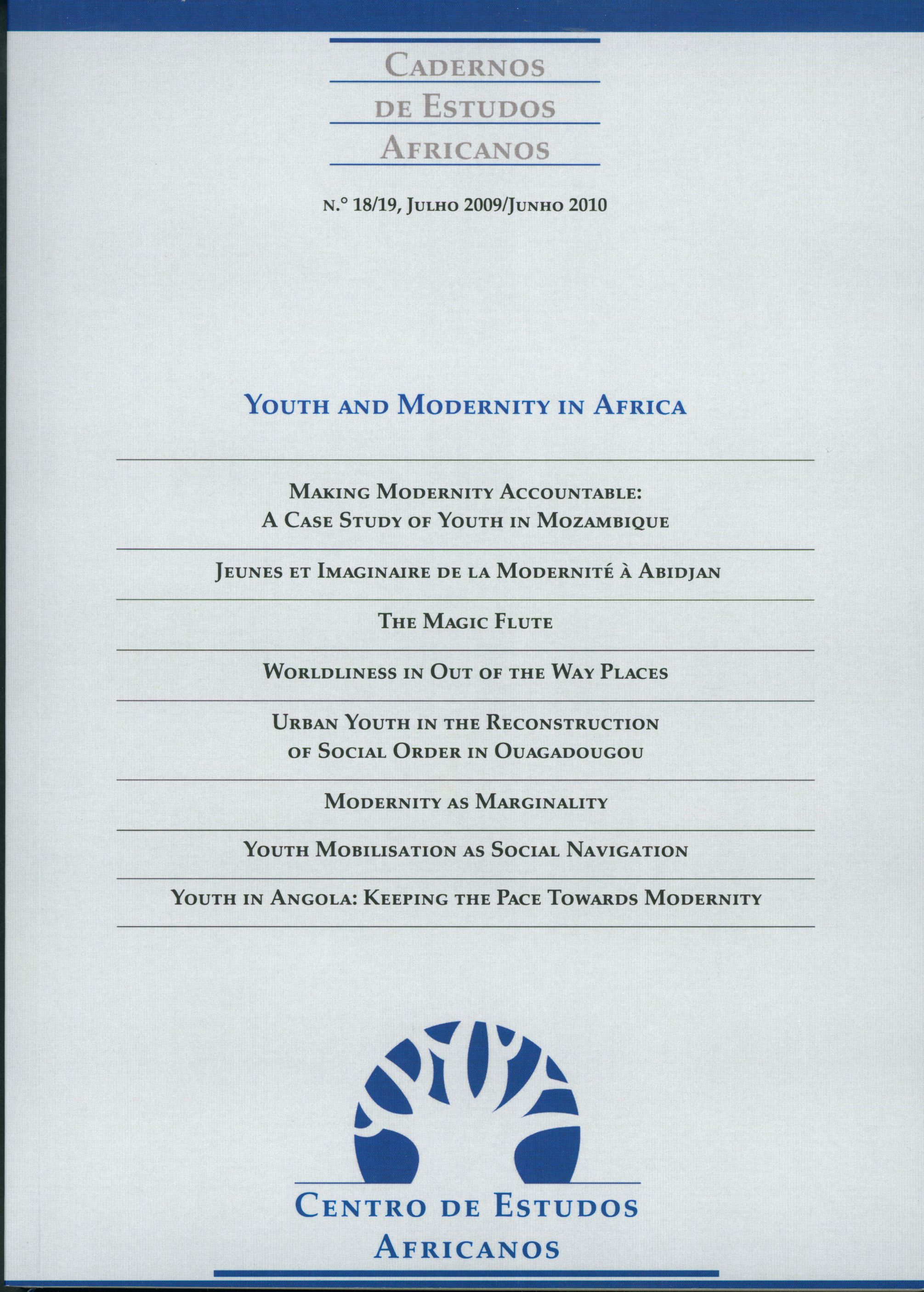The Magic Flute: How modern dances were introduced among Baga Sitem in Guinea in 1956
DOI:
https://doi.org/10.4000/cea.93Keywords:
youth, popular culture, Guinea-Conacry, Baga, oral historyAbstract
In 1956, le bal, i.e. new forms of French-inspired music and dance were introduced among the Baga Sitem of French Guinea at a time of global youth consciousness. At the time, the youths fell fascinated by the new instruments and bodily languages of le bal, but their elders, much more attached to local forms of music and ritual dance, did not want to accept the new one in the public sphere. Based on oral history, this article discusses the tension between youths and elders and proposes a generational and structural approach to the study of youth and modernity, suggesting that the tensions between youths and elders, and between new and old forms of popular culture may be much more ancient than normally assumed.References
Argenti, Nicolas (2007). The intestines of the State: Youth, violence, and belated histories in the Cameroon Grassfields. Chicago, The University of Chicago Press.
Bangoura, Sékou Béka (1972). “Croyances et pratiques religieuses des Baga Sitému”, undergraduate thesis, University of Kankan.
Bordonaro, Lorenzo I. (2007). “Living at the margins: Youth and modernity in the Bijagó islands (Guinea-Bissau)”, PhD Thesis, ISCTE, Lisbon.
Dongala, E. (2001). The fire of origins. Chicago, Lawrence Hill Books (translated from French by Lillian Corti).
Goerg, Odile (1989). “Les mouvements de jeunesse en Guinée de la colonisation à la constitution de la J.R.D.A. (1890-1959)”, in Topor, H. d’Almeida and O. Goerg (eds.), Le mouvement associatif des jeunes en Afrique noire francophone au XXè siècle. Paris, L’Harmattan.
Mannheim, K. (1952 [1927]). “The problem of generations”, in Essays on the Sociology of Knowledge. London, Routledge and Kegan Paul.
Martin, Phyllis (1995). Leisure and society in colonial Brazzaville. Cambridge, Cambridge University Press.
DOI : 10.1017/CBO9780511584756
McGovern (2004). “Unmasking the state: Developing modern political subjectivities in twentieth century Guinea”, PhD thesis, Emory University.
Morgenthau, Ruth S. (1964). Political parties in French-speaking West Africa. Oxford, Clarendon Press.
Rof Carballo, Juan (1970). Rebelión y futuro. Madrid, Taurus.
Sarró, Ramon (2009). The politics of religious change on the Upper Guinea Coast: Iconoclasm done and undone. Edinburgh, Edinburgh University Press for the International African Institute.
Schmidt, Elizabeth (2005). Mobilizing the masses: Gender, ethnicity, and class in the nationalist movement in Guinea, 1939-1958. Portsmouth, NH, Heinemann.
Scott, James C. (1998). Seeing like a state: How certain schemes to improve the human condition have failed. New Haven, Yale University Press.
Vieira, Gérald (1999). Sous le signe du laïcat: Documents pour l’histoire de l’église catholique en Guinée, Vol. II (1875-1925). Dakar, Imprimerie Saint-Paul.
Downloads
Published
Issue
Section
License
Copyright (c) 2016 Cadernos de Estudos Africanos

This work is licensed under a Creative Commons Attribution-NonCommercial-ShareAlike 4.0 International License.
I authorize the publication of the submitted article/review of which I am the author.
I also declare that this article is original, that it has not been published in any other way, and that I exclusively assign the publication rights to the journal Cadernos de Estudos Africanos. Reproduction of the article, in whole or in part, in other publications or on other media is subject to the prior authorization of the publisher Centro de Estudos Internacionais do Iscte - Instituto Universitário de Lisboa.

